#adventuresseswelove
Explore tagged Tumblr posts
Text


Mary Alice Nelson was born in 1903 on Indian Island, Maine, part of the Penobscot Reservation. The oldest child of a tribal official and a prominent Penobscot artisan, Mary Alice began performing traditional Penobscot dances for tourists when she was 13. Before long, she was making her living dancing on the vaudeville circuit.
She left the limelight behind to study anthropology at the University of Pennsylvania. After only two years, though, the money ran out, so she returned to modeling and dancing, adopting the stage name Molly Spotted Elk. She was a success, causing a sensation everywhere she went, although catering to the attitudes of the day meant dancing in an abbreviated buckskin costume, (or less,) and acting out common stereotypes of Indigenous People. It was during this time that she started a second career as a writer.
It wasn’t long before Hollywood called. Spotted Elk was cast as Neewa, the female lead, in 1930s “The Silent Enemy.” One of Paramount’s last silent films, this groundbreaking production about pre-contact Ojibway life featured an all-Indigenous cast and set out to break stereotypes and myths. Sadly, it was a flop. Spotted Elk would appear in supporting roles in a couple more films, but never again had a lead role.
In 1931 Molly Spotted Elk began performing in France, where she found the audiences to be much more open to actual traditional dances than American audiences had been. She also found love with French journalist John Archambaud. The pair would marry, have a daughter they named Jean, and were by all accounts happy.
Until the war came.
Archambaud was an outspoken anti-Nazi, which made him a target. When Germany invaded, John was separated from Molly and their daughter. They never saw him again. Molly and Jean escaped over the Pyrenees to Portugal – mostly on foot. Jean would later recall, “We walked, we ran, we rode ambulances. A newsman picked us up once, and my mother always claimed it was Howard K. Smith. Adventure always followed her even in adversity.”
Spotted Elk returned to performing in New York, retiring from the stage in the early 1950s. She spent the rest of her life on Indian Island. Mary Alice Archambaud/Molly Spotted Elk died on February 21, 1977. Her writings have been collected into the book, “Katahdin: Wigwam’s Tales of the Abnaki Tribe”, published by the Maine Folklife Center.
16 notes
·
View notes
Text

Adventuresses We Love - Shirley Chisholm Adventuress Shirley Chisholm could be neither bought nor bossed. The daughter of immigrants, Chisholm’s first foray into politics was a run to represent her Brooklyn district in the New York State Assembly. It was not an easy campaign, with many in the Democratic party establishment reluctant to back a woman candidate. By appealing directly to women voters, and not being afraid to step on some toes when needed, Chisholm was able to secure the Democratic nomination and, ultimately, win the seat. She served in the New York Assembly from 1965 – 68, championing civil rights, workers’ rights, and education.
In 1968, Chisholm was elected to the House of Representatives by a 2-to-1 margin over her opponent, and in so doing became the first Black woman elected to Congress. She was initially assigned to the agricultural committee, despite coming from a very urban congressional district. While less than happy about the assignment, she used that seat to help expand food assistance programs, including working with Bob Dole to help create WIC.
In 1971, she helped create the Congressional Black Caucus and National Women’s Political Caucus.
In 1972, Chisholm set her sights even higher with a Presidential run, becoming the first Black person to run for a major party’s nomination, the first woman to try for the Democratic nomination, the first woman to appear in a Presidential debate. Her campaign was underfunded, and she was largely ignored by the Party establishment and her male colleagues, yet she’d still go on to win 153 first-round delegates at the Democratic convention before ultimately losing to George McGovern. (McGovern would ultimately lose the general election to incumbent President Richard Nixon.)
Returning to Congress, Chisholm continued to work for civil rights, workers’ rights, and the expansion of education, health care, and other social services, while also fighting against the war in Vietnam and the draft. She also became a mentor for a new generation of women Representatives. Chisholm retired from Congress in January 1983.
After a series of strokes, Adventuress Shirley Chisholm died January 1, 2005, at the age of 80. She was posthumously awarded the Presidential Medal of Freedom by President Barack Obama in November 2015, and the Congressional Gold Medal in 2024.
10 notes
·
View notes
Text

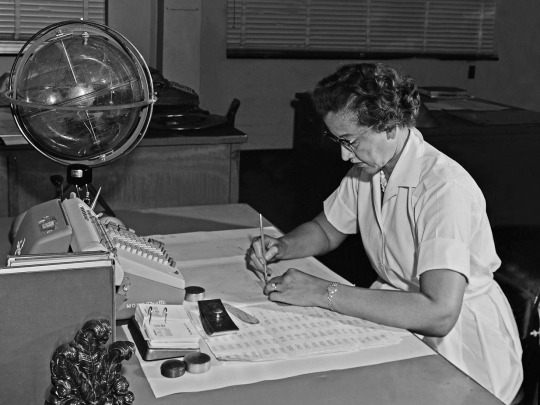
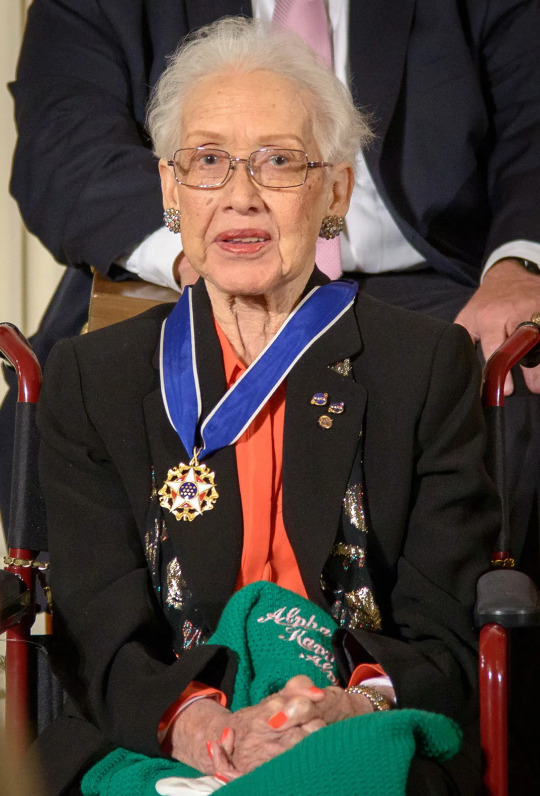
Katherine Johnson had a strong aptitude for mathematics from an early age. This skillset would lead to her graduating magna cum laude from West Virginia State College (at the age of 18!), to becoming one of the students to integrate West Virginia University, and, eventually, to her work in aerospace.
In 1953. Johnson became part of the pool of mathematicians working in the National Advisory Committee on Aeronautics’ (NACA) Guidance and Navigation Department in Hampton, VA. She was part of the team reading data from airplane’s “black boxes” and performing complicated, precise calculations with the data. One day, she was “temporarily” reassigned to the flight research team, where her grasp of analytic geometry impressed her superiors to the point that, “they simply forgot to return me to the pool.”
NASA replaced NACA in 1958, ending the “official” segregation of the Langley facility. Johnson was part Project Mercury that would send Americans into space. She calculated the trajectory for Alan Shepard’s flight when he became the first American, and second human, to go to space. John Glenn famously demanded Johnson double check the calculations a digital computer had made for the first orbital flight, refusing to fly until she made sure the machine had done it right.
Johnson continued to play a critical role in the development of America’s space program, including being part of the Apollo program, including calculating the trajectory of Apollo 11. The backup procedures and charts she worked on helped the Apollo 13 mission return safely to Earth after the disaster that cut that mission short. Johnson would also work on the Space Shuttle program, and the early days of NASA’s Mars mission before retiring from NASA in 1986.
Among her many honors, Johnson was awarded the Presidential Medal of Freedom by President Obama, NASA’s Silver Snoopy award, and the Congressional Gold Medal. Mattel also made a commemorative Barbie in her likeness, including a NASA identity badge.
Adventuress Katherine Johnson died at her home in Newport News, VA, on February 24, 2020. She was 101.
16 notes
·
View notes
Text


Adventuresses We Love – Annie Londonderry In 1894, two Boston businessmen reportedly made a $10,000 bet that no woman could bicycle around the world in 15 months or less. Annie Cohen Kochopsky took them up on that bet. To help finance the trip, Kochopsky sought out sponsors and sold ad space on her bike. Her first sponsor was Londonderry Lithia Spring Water Company. They agreed to pay $100 in exchange for her carrying an advertising placard for them, and if she would agree to go by the name Annie Londonderry for the duration of the adventure. Annie readily agreed. On June 27, 1894, despite having only learned how to ride a bike a couple of days earlier, Londonderry set out from her home in Boston’s Beacon Hill and headed west. She carried with her a change of clothes and her pearl handled revolver. She arrived in Chicago that September, and realized she had a problem. Winter was coming fast, and there was no way she’d be able to cross the Great Plains and Rocky Mountains when the snows came. So, she reversed course and rode back to Boston. Where she started over, this time heading east. She rode to New York, jumped a steamer to France, then biked to Marseilles. From there her travels took her through the Middle East, Sri Lanka, Singapore, Russia, North Korea, China, and Japan. She left Yokohama and sailed to San Francisco, then spent the next six months bicycling across the Southwest and Midwest. Londonderry reported that she was held captive while biking across China at the height of the Sino-Japanese War. Still, it seems the greatest dangers she faced were from animals - she and another cyclist were nearly killed by a runaway horse and rider in California; while a collision with a herd of pigs in Iowa left her with a broken wrist. Londonderry arrived back in Chicago on September 12, 1895, and claimed her prize. She’d made the trip with 2 weeks to spare, becoming in the process the first woman to circumnavigate the globe by bicycle. Anne Cohen Kochopsky, aka Annie Londonderry died from a stroke on November 11, 1947. She was 77 years old.
27 notes
·
View notes
Text



Adventuresses We Love – Bertha Benz Adventuress Bertha Benz was a woman with a vision, one she shared with her husband, Carl – to invent a practical “horseless carriage.” She believed in this vision so much that two years before their wedding, she used her dowry to bail out his failing company and invest in its future. The two of them would collaborate on the design and engineering of the car’s components, including its two-stroke engine, throughout the vehicle’s development. Progress was slow, but steady, and on New Year’s Eve1879 they finally got their engine to work. They continued to make improvements to the vehicle, until finally, in early 1886, Carl obtained a patent for their “motor car with gas engine operation.” The car made its public debut in Mannheim that summer, where… …nobody wanted it. There had been a few cars built before the Benz’s, enough to make everyone really, really nervous about them. Even the Vatican had spoken out against them, declaring the automobile to be a devil’s or witch’s carriage. Some localities in Germany had already outlawed the use of such vehicles, threatening to fine anyone operating them. Now, Carl was an engineering marvel, but a complete dunce at marketing. It would fall to Bertha to win people’s hearts and minds, and change the view of the automobile in their eyes. To accomplish this, she knew exactly what she had to do. She had to go visit her mom. At dawn on August 5, 1888, Bertha and her sons, Robert and Eugen, left Mannheim and headed towards Pforzheim, about 60 miles away. Today, we might not think of that as any big deal – that’s not much more than my commute to work – but in 1888, it was an Epic Road Trip. The first of its kind! The trip was fraught with challenges, not the least of which was that the car got 25mpg – but only carried about 1.3 gallons of fuel. To resolve this, Bertha bought the entire supply of ligroin – a petroleum-based cleaner – from a chemist in Wiesloch and used that to power the car. (The chemist’s in Wiesloch is still today recognized as the world’s first service station.) Bertha also found innovative solutions for some of the mechanical failures the car ran into on the way. For example, she used her hat pin to clear a clogged fuel line, and her garter to insulate a frayed spark plug wire. When the wooden blocks used in the brakes started to wear out, she stopped at a cobbler’s shop and had leather added to them – thereby inventing the world’s first brake pads. Another challenge – hills. The car had two gears – not quite enough to summit some of the hills on the route. Robert and Eugen got out and pushed it up a couple of them. Finally, after 13 hours on the road, Bertha and her boys arrived in Pforzheim. She telegraphed Carl to let him know, then enjoyed a few days with her mom before driving home. Bertha’s road trip started to change public opinion about the car, and led to her and Carl’s company being the automotive giant we know today. She also showed the importance of test drives – innovations were added to the design to overcome the issues she’d found on this trip (including adding a third gear which made hills much easier). Test drives are standard, essential practice for automobile manufacturers today, but had never been done before Bertha’s trip in 1888. Adventuress Bertha Benz died on May 5, 1944, two days after her 95th birthday. On May 3, 2024, Bertha’s 175th birthday, the German government issued a postage stamp honoring her and her contributions to automotive history.
18 notes
·
View notes
Text


Adventuresses We Love – Muriel Thompson
Adventuress Muriel Thompson was never one to let preconceived notions about her gender stand in her way. She started driving the family motor car at an early age, sparking her passion for driving and, eventually, racing.
The UK’s Brooklands Automobile Racing Club did not allow usually allow women to race but made an exception for a “Ladies Bracelet Handicap” race on 4 July 1908. Thompson was one of seven competitors in the all-women race. Thompson outpaced the pack, winning the race by several meters over Ethel Locke King.
As the crowd gathered around her following the victory, someone cried out, “women deserve the vote now!” An ardent suffragist, Thompson readily agreed. She’d go on to become the chauffeur for suffragist leader Emmeline Pankhurst’s 1909 tour of the UK, driving an Austin painted green with purple stripes and white tires, the colors of the suffragist movement.
Thompson continued racing until the outbreak of World War I. She joined the First Aid Nursing Yeomanry as a driver. In May 1918, she and her unit were deployed to the site of an aerial bombing in Arques. While working to help the injured, a second air raid began. The women were ordered to take cover. They refused and continued to get the wounded to safety while the bombs fell all around them. Thompson was awarded the Croix de Guerre and the Military Medal for her actions that night.
Adventuress Muriel Thompson returned home in October 1919. She died in London from encephalitis lethargica on 3 March 1939. She was 63.
18 notes
·
View notes
Text
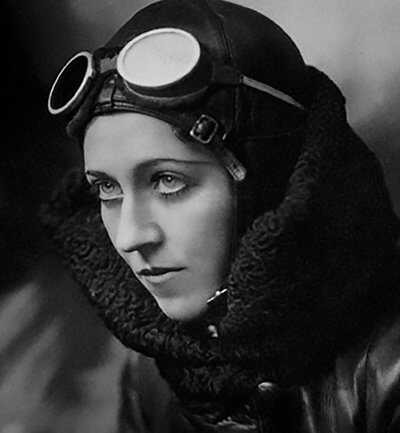


Adventuresses We Love – Amy Johnson Adventuress Amy Johnson started taking flying lessons at the London Aeroplane Club in 1928. Typical chauvinistic attitudes of the day meant she had to spend twice as much time in training as her male colleagues, but she did finally earn her pilot’s license in 1929. Later that year, she became the first British woman to qualify as an aircraft ground engineer. She then set her eyes on another goal – Australia. On May 5, 1930, with only 75 hours flying time under her belt, Johnson took off from Croydon in her deHavilland Gipsy Moth she’d named Jason. The flight would not be an easy one. Along the way, she’d battle sandstorms, monsoons, and blistering heat. As she sheltered from a sandstorm, packs of wild dogs got a little too close for comfort. Low on fuel, she made an emergency landing on a military parade ground in Pakistan, scattering the soldiers assembled there in the process. Finally, on May 24, she landed in Darwin, Northern Territory, becoming the first woman to fly solo from England to Australia. For this feat, she was awarded the Harmon Trophy, and a CBE by King George V. This was the first of several long-distance record flights for Johnson. In 1932 she flew from London to Cape Town, South Africa, beating the previous record (set by her husband,) by 11 hours. During World War II Johnson flew for the Air Transport Auxiliary, ferrying aircraft around England. On January 5, 1941, Adventuress Amy Johnson disappeared when the plane she was ferrying crashed into the Thames estuary. She was 37 years old; her body was never recovered. Jason is on permanent display at the Science Museum of London. Photo of Jason courtesy of the Science Museum of London, shared under the creative commons license.
26 notes
·
View notes
Text


Adventuresses We Love – Emily Calandrelli
For Adventuress Emily Calandrelli, even the sky is no limit. While working towards her Masters degrees in Aeronautics and Astronautics, and Technology and Policy, she interned with NASA, where she was part of the Phoenix Mars Lander project. After college, she began a career as a science communicator. She’s been the host and executive producer of Fox’s Xploration Outer Space, as well as the host of Netflix’s Emily’s Wonder Lab. She’s the author of several children's books introducing kids to science and technology, and a strong advocate for space exploration and STEM education, especially for young women.
On November 22, 2024, Adventuress Emily Calandrelli flew aboard Blue Origin NS-28, becoming the 100th woman to travel to space.
11 notes
·
View notes
Text

Adventuresses We Love - Krystyna Chojnowska-Liskiewicz You could say that Adventuress Krystyna Chojnowska-Liskiewicz was destined to go to sea. She was working as an engineer in the Gdansk shipyard when the Polish government announced a competition to find a female sailor to sail around the world. The trip was part of the government’s efforts to mark International Women’s Year (1975.) An experienced sailor, Chojnowska-Liskiewicz won the chance and started preparing.
She set out from the Canary Islands in March 1976 in her 32ft sloop, the Mazurek. The boat had been specially designed and built for this trip by her husband and his crew in Gdansk. Crossing the Atlantic, she arrived at her first stop – Barbados. Engine trouble meant she would rely primarily on her sails to maker her way south through the Caribbean to Panama. She’d spend the next five weeks in Panama fixing the engine, then slipped through the Panama Canal into the Pacific Ocean.
Chojnowska-Liskiewicz’s next stops were Tahiti, Fiji, and Sydney, where she was briefly reunited with her husband. Leaving him behind, she sailed up the coast, but had to put in at Portland Road, Queensland, because of kidney stones that forced a hospital visit. Once released, she made her way back to port only to find the Mazurek gone! The sloop’s anchor chain had broken and set her adrift. Luckily, the yacht was recovered before any further damage.
Chojnowska-Liskiewicz and the Mazurek made their way to Darwin where they prepared for the long voyage across the Indian Ocean. She reached the Mauritius and South Africa, then turned north. Her autohelm failed as she rounded the Cape of Good Hope, so she decided to steer manually the rest of the way, limiting herself to sleeping just two hours per day. Finally, in April 1978, Chojnowska-Liskiewicz sailed back into Las Palmas Gran Canaria, becoming the first woman to sail around the world solo.
Adventuress Krystyna Chojnowska-Liskiewicz died June 13, 2021. She was 84.
10 notes
·
View notes
Text



Adventuresses We Love – Kay Cottee
Adventuress Kay Cottee pretty much grew up on the water. She spent a good bit of her youth sailing Sydney Harbor in a boat her father had built. It wasn’t long before she was building boats herself and discovered her love of racing them. But she had a bigger goal in mind.
On 29 November 1987, Cottee sailed out of Sydney Harbor aboard her 37ft yacht, Blackmores First Lady and headed west. Her plan? To sail around the world nonstop, alone and unassisted.
The seas were rough. She was battling against 100-knot winds and 20-meter waves through much of early days, waves that knocked the First Lady over multiple times. One such knock over, off the coast of Africa, broke the First Lady’s boom and washed Cottee overboard. She was able scramble back aboard, fix the boom, and keep going.
One night, she woke from sleep to see a commercial fishing vessel bearing down on her. The fishing vessel’s crew had no idea she and the First Lady were there. She managed to fire off a flare, alerting the fishermen, who were able to divert their ship, and avoid the collision, at the last possible moment.
Finally, on 5 June 1988, after 189 days at sea, Adventuress Kay Cottee and Blackmores First Lady sailed back under the Sydney Harbor Bridge, becoming the first woman to complete a solo, nonstop, and unassisted circumnavigation of the world.
Adventuress Kay Cottee still sails, builds boats, and paints and sculpts in New South Wales. Blackmores First Lady is now part of the collection of the Australian National Maritime Museum in Sydney.
10 notes
·
View notes
Text

Adventuresses We Love - Malala Yousafzai “Who is Malala?” the Taliban gunman demanded after boarding the bus carrying children home from school in Pakistan’s Swat Valley. Malala Yousafzai was a young woman who loved learning. Her parents encouraged her and helped fan those flames. But in 2008, the Taliban came to power in their valley. They quickly banned education for women and closed (and in many cases, blew up,) all the girls’ schools in the valley.
Malala began speaking out about the injustice, giving a speech at the Peshawar Press Club, then through a diary detailing the events in the valley and speaking out against the regime. That diary would end up being published – anonymously – by the BBC. At the time Malala was 11 years old.
Her identity as the BBC blogger was revealed in late 2009. She would continue advocating for women’s education, adeptly using traditional and social media to raise awareness of what was going on.
As her prominence grew, she became a target. As you may imagine, the Taliban was not happy with her efforts. This led to their soldier climbing aboard that bus on October 9, 2012. He seized Malala and 2 other girls, led them off the bus, and shot them. 15-year-old Malala was shot in the head.
Thankfully, all 3 girls lived. An unconscious Malala was airlifted to several military hospitals in Pakistan and, eventually, the UK. She regained consciousness in hospital in Birmingham, England, 10 days after the shooting. Several months of treatment and surgeries followed, leading to an almost complete recovery.
If the Taliban thought the attack would silence her, they were so very wrong. On July 12, 2013 – her 16th birthday – she addressed the United Nations. On her 18th birthday, she opened a school for girls in the Bekaa Valley, Lebanon. And through the Malala Fund, she continues to “…work for a world where every girl can learn and lead.”
To learn more, visit
10 notes
·
View notes
Text

Adventuresses We Love - Maureen Flavin Sweeney It was June 3, 1944, and Maureen Flavin was going about her business as sub-postmistress of Blacksod, Co. Mayo, Ireland. Blacksod’s post office was housed in the lighthouse, which also served as the weather station, and one of Flavin’s duties was to make regular weather observations. She checked her instruments and the tale they told was clear – a storm was coming, likely hitting on the 5th. She reported her forecast, then went about her other duties.
Almost immediately the messages and phone calls started flooding in. “Please repeat, please recheck.” So, Flavin did. She checked, and rechecked her figures, and came to the same conclusion – the English Channel was going to be a right mess on June 5.
That was going to be a problem.
What Maureen didn’t know was that her forecasts were being communicated to Gen. Dwight D. Eisenhower, Supreme Commander of Allied Forces in Europe. Eisenhower and his team had been preparing an invasion of occupied France, and amphibious assault involving hundreds of thousands of troops, and supported by thousands of aircraft. An invasion that was planned for June 5.
The low cloud deck with the storm meant that air support wasn’t going to be possible, and the seas were going to be even rougher than usual. If the “go” order came on the 5th, the mission would have been a complete disaster.
Thanks to Flavin’s warning, that didn’t happen. Based on her forecasts, Eisenhower delayed the D-Day invasion 24 hours, until June 6, 1944 – 80 years ago today.
Maureen wouldn’t find out about the role she’d played in D-Day until 1956. By that point, she’d married the lighthouse keeper and started a family. In 2021, she was honored by the US House of Representatives. In sponsoring the citation, Rep. Jack Bergman wrote that “…her skill and professionalism were crucial in ensuring Allied victory, and her legacy will live on for generations to come.”
Adventuress Maureen Flavin Sweeney died December 17, 2023, at the age of 100.
18 notes
·
View notes
Text
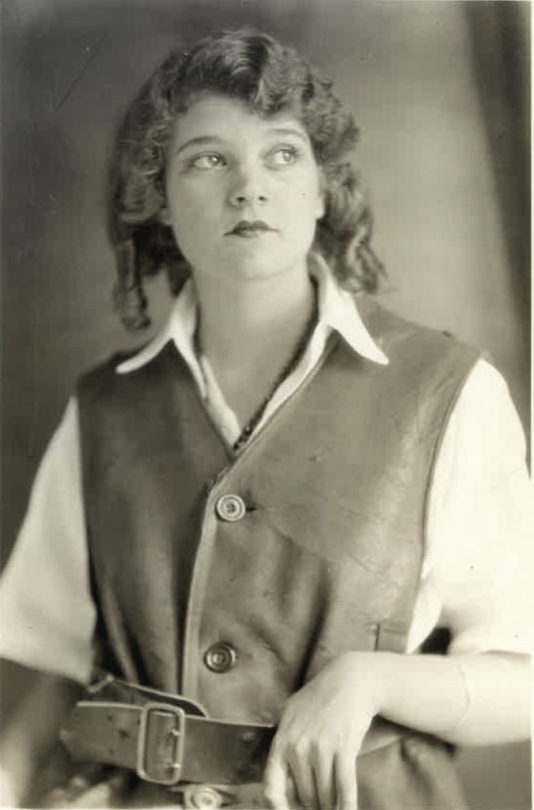
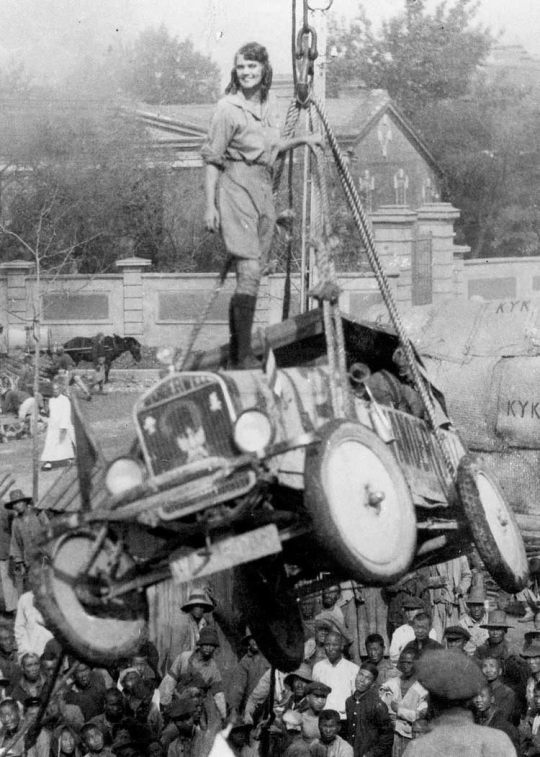
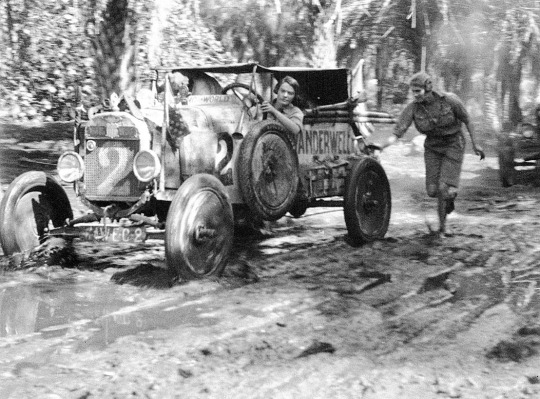
Adventuress Aloha Wanderwell Baker, sometimes called "the Amelia Earhart of the Automobile," became "the first woman to drive around the world," as part of the Wanderwell Expedition from 1922-1927. She made the trip largely behind the wheel of a Ford Model-T (Ford sponsored the expedition,) filming the adventure and giving talks along the way. By some accounts, she was the most well-traveled woman in the world, chalking up over 500,000 miles before her death in 1996
34 notes
·
View notes
Text


On 4 April 1887, Susanna Salter made political history – without ever intending to.
Salter had been a force in local politics for some time. When her father was elected the first mayor of Argonia, Kansas, and her husband the city’s clerk, she helped write the local ordinances for the town. But her primary focus was on the temperance movement.
Salter joined Women’s Christian Temperance Union and quickly rose through the ranks. Before long, she was leading Argonia’s WCTU chapter. During this time, the WCTUs activities went beyond protesting outside of saloons to directly engaging with, and policing, the men who were drinking inside. While these activities drew the attention of national temperance leaders like Carrie Nation, they didn’t sit well with men of Argonia.
A group of these hard-drinking Kansas men devised a plan to deal with Salter once and for all. Without her knowledge, they put her name on the ballot for mayor. Their thinking was that the crushing defeat they knew would follow would be so humiliating, not only would it ruin Salter’s reputation, it would also effectively silence the WCTU and discourage any other women from getting involved in politics.
She won by a landslide, and thereby became the first woman elected mayor of any city in the United States.
During her sole term, Salter impressed friends and foes with her intelligence, decorum and parliamentary skill. She declined to stand for reelection (and nobody else put her on the ballot this time), retiring to private life. While her time in office was largely uneventful, it paved the way for other women to hold office throughout the country.
Adventuress Susanna Salter died 17 March 1961. She was 101.
4 notes
·
View notes
Text

Adventuresses We Love - Tara Dower
For most people who attempt it, hiking all 2,189 miles of the Appalachian Trail is a many-months-long trek. Adventuress Tara Dower is not most people.
Dower, a professional ultrarunner from Virginia, began her adventure at the AT’s northern terminus, Mt. Katahdin, ME, in August 2024. From there, she headed south – fast. She’d start each day’s run at 3:30 am, and keep going until 8:30 – 9:30 pm, her day only be punctuated by short meal breaks and the occasional 90-second “dirt nap.” In spite of the rocky and challenging terrain, she was able to cover an average of 54 miles per day. When she was within 129 miles of the finish line, she stopped sleeping and just kept pushing to achieve her goal.
Just before midnight on September 21, 2024, Adventuress Tara Dower reached Springer Mountain, GA, the AT’s southern terminus. She’d completed her through-hike in 40 days, 18 hours and 5 minutes – the fastest known time anyone has ever conquered the trail.
Dower used this attempt as a fundraiser for Girls on the Run, a nonprofit dedicated to “creating a world where every girl knows and activates her limitless potential and is free to boldly pursue her dreams,” at last count, raising more than $55,000 for the organization. You can learn more about Girls on the Run by visiting girlsontherun.org.
6 notes
·
View notes
Text
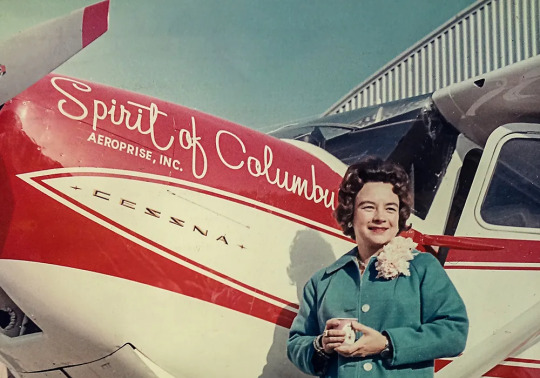
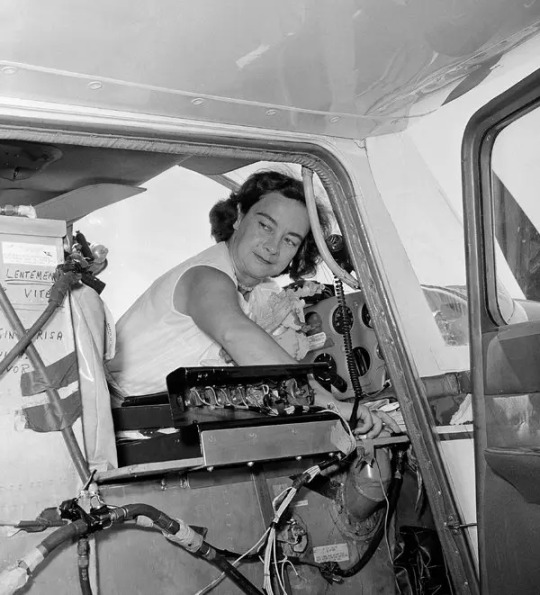

Adventuresses We Love - Jerrie Mock
60 years ago this week, Adventuress Jerrie Mock became the first woman to fly solo around the world. On March 19,1964, Mock took off from the Columbus, OH, airport in her single engine Cessna 180, the "Spirit of Columbus." She headed east, spending several days crossing the Atlantic before touching down for her first stopover in Morocco, where "…there were no nightmares of thunderheads over the Atlantic. Dressed in red satin, I danced in marble palaces." From there, she continued on, her route taking her over Egypt (where she touched down at a secret military base she'd mistaken for the Cairo airport,} Saudi Arabia, Vietnam, and the Pacific, before finally returning to Columbus. She touched down in Columbus on April 17, 1964 - two weeks ahead of Joan Merriman Smith, who was circling the globe at the same time, following Amelia Earhart's westerly route.
Mock would go on to set several more records in the world of flight. Among her many honors, she was awarded the Louis Blériot medal from the Fédération Aéronautique Internationale, the Federal Aviation Agency Gold Medal for Exceptional Service, and the Amelia Earhart Memorial Award. In 2022, she was inducted into the National Aviation Hall of Fame.
Jerrie Mock died September 30, 2014. The "Spirit of Columbus" is on display at the National Air and Space Museum's Steven F. Udvar-Hazy Center outside of Washington, DC.
7 notes
·
View notes